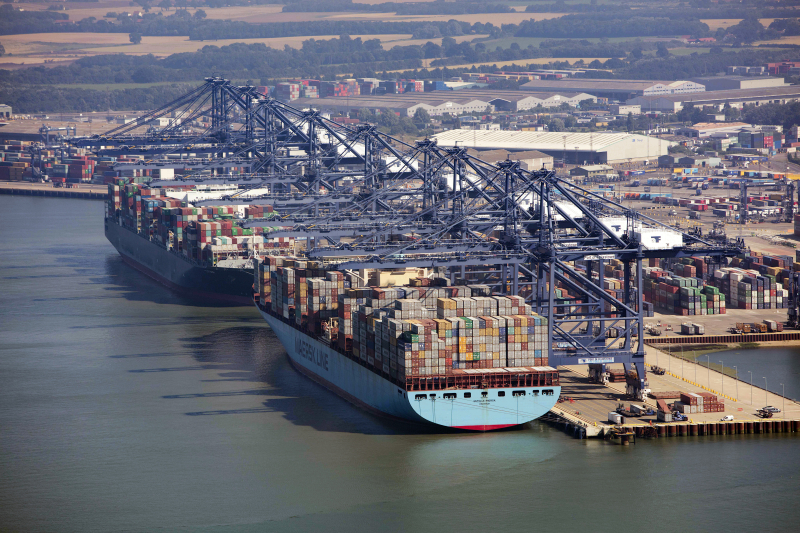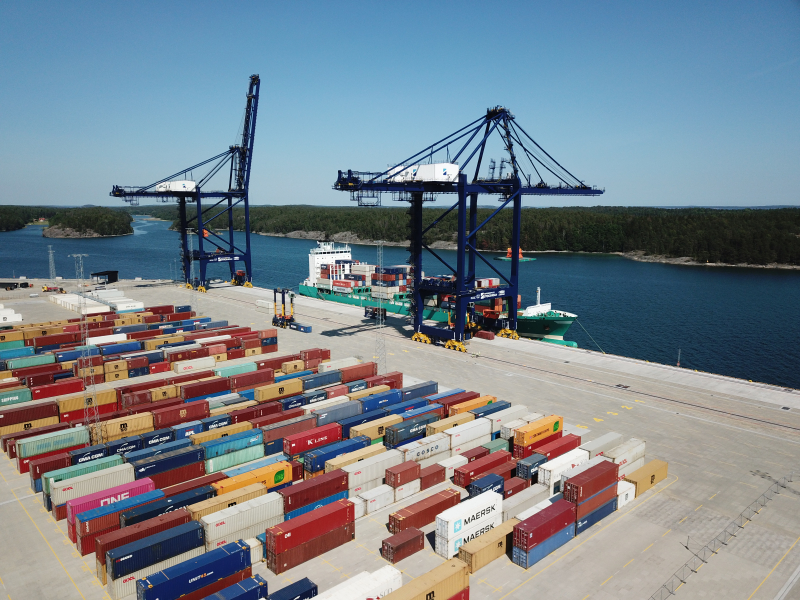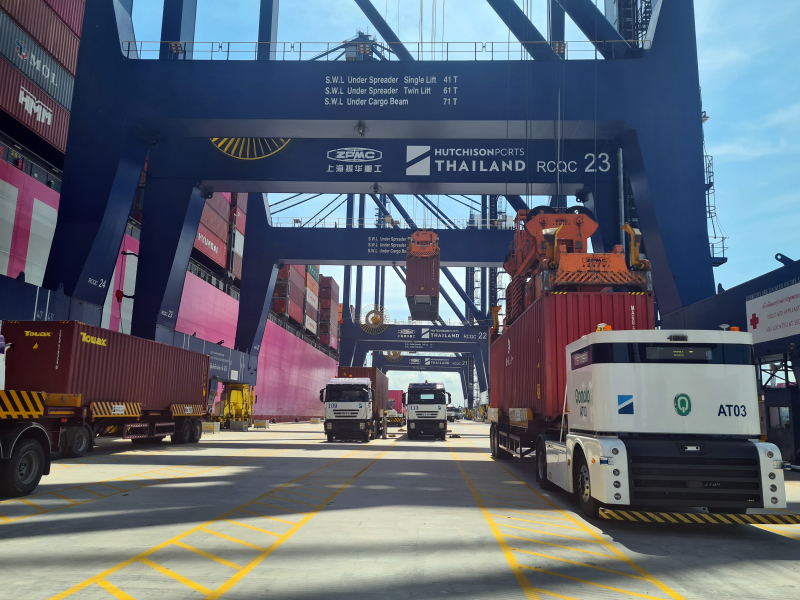Beyond Deep Water: Port Design in the 21st Century
Modern ports are marvels of industrial design. Cities often grew up around ports that provided the economic lifeblood of the nation. The introduction of containers revolutionised shipping and, by extension, ports. In many cities, ports left urban centres completely as container ships became mind-bogglingly huge, carrying tens of thousands of containers bearing hundreds of thousands of tonnes of goods.
Modern ports are defined by their ability to accommodate the world’s biggest ships and their use of technology to drive efficiency and a greener environment. Hutchison Ports is leading the global industry in bringing world-class design to new and upgraded ports from China and Thailand to the UK and Sweden.

On the Waterfront
Just a few decades ago, Panamax ships were the biggest on the oceans, defined as the largest ships that could still traverse the Panama Canal. But now the monsters of the sea are the ULCVs – Ultra Large Container Vessels. Where once 300m-long berths sufficed to berth Panamax ships, newly constructed or expanded berths up to 500m long can host these giants and their even bigger successors to come. Currently, the ULCVs can accommodate over 24,000 TEU and stack up to 12 high on the ship deck. The containers from one such ship stacked one on top of the other would be higher than 440 Eiffel Towers!
Bigger ships demand design changes that can only be accommodated by the world’s biggest ports. Hutchison Ports’ Port of Felixstowe in the UK is one such port, along with the Port of Yantian in China and Thailand’s Laem Chabang Port. Hosting these colossi provides a competitive advantage over rival ports that do not have the capacity to unload and reload these huge vessels. Shipping lines prefer ports that can move large ships in and out quickly, off to make more money. But investments must be made to accommodate them.
Berths must be up to 500m long to host ULCVs. They can accommodate over 24,000 TEU and stack up to 12 high on the ship deck.
More of everything!
In addition to a longer quay, the designers must plan for dredging for the deeper draft of larger vessels (the vertical distance between the waterline and the bottom of the keel). The longer quay must be more massive (ie, bulked up with concrete) to bear the weight of even bigger cranes. It must also be wider to deal with the increased traffic with more containers moving through more quickly. In short: more of everything!
Stepping off the quay, designers demand up to 30 hectares (300,000 sqm, the equivalent of 48 Old Trafford-sized football fields) of shore area per berth. In the past, 12 to 13 hectares would have sufficed for shoreside transport links, cranes and other facilities. But now, increased throughput demands more space for increased traffic and temporary storage of containers on the move.
Another advance in port design is the accommodation of hydrogen as a fuel source that has the potential to transform not just port operation but surrounding communities. The Port of Felixstowe is leading the way in greening the whole region surrounding their port by designing for a future with hydrogen input, processing and energy generation for their own remote-control and electric vehicles, visiting hydrogen fuel cell trucks and trains, and maybe even for ship power in the future (read more here).

Autonomy arrives at the ports
Hutchison Ports Thailand (HPT) Terminal D at Laem Chabang Port Thailand is the first to feature AI-driven autonomous trucks that interact with other terminal equipment and trucks driven by people. The system at HPT Terminal D has seen trucks achieve autonomy driving Level 4 as defined by the Society of Automotive Engineers, indicating total autonomy but in a defined area. In essence, the trucks drive themselves and look out for everyone and everything around them.
Semi-autonomous cranes work in tandem with remote operators to further increase efficiency at the port. A vast array of sensors, cameras and special lighting feeds information to the AI and the operator alike who work together to load and unload ships around the clock. The AI helps operators, working remotely from a comfortable office, to improve throughput time and reduce errors. The system is a vast improvement on the days when cranes were operated by solitary individuals who would eyeball loading manoeuvres while confined to a small cabin in the sky for entire shifts.
The trucks drive themselves and look out for everyone and everything around them.

Autonomous vehicles are outsized by even bigger robots – Automated Straddle Carriers (Auto-SCs) – that are coming to Hutchison Ports Stockholm. These are massive, mobile cranes up to 16m high, sporting two long legs to the ground with a supporting bridge in the middle. They can pick up containers, stack them up to three high and move them around the port without human intervention. Unlike trucks that can only carry one or two containers at a time and which idle when they have to wait, Auto-SCs can decide to stack containers in an appropriate part of the port and come back to them after they complete other work. They communicate with the Hutchison Ports global in-house software, nGen, and a fleet management system that provide instructions and oversight, respectively.
This, plus other automated elements, means that the whole port can run with only 34 staff, making it one of the most efficient in the world. These systems also reduce staff exposure to the elements (think Swedish winter) while allowing a more diverse workforce to handle more throughput from comfortable offices rather than from the dockside.
Design for the 21st century remains challenging as port operators have to consider the implications of ever-bigger ships and automation factors that may demand more land and investment.
Design trade-offs
Design for the 21st century remains challenging as port operators have to consider the implications of ever-bigger ships and automation factors that demand more land and investment. Automation is helping to break throughput records as bigger and bigger ships can be loaded and unloaded. The biggest ships in the world today can carry up to 24,000 TEU. But renovation is expensive, disruptive and not to be taken lightly. So designers have to ensure that they make the best of the immense investment demanded to build competitive, efficient ports. They will create 21st-century ports that are bigger, faster and smarter at bringing the world to their doorstep.